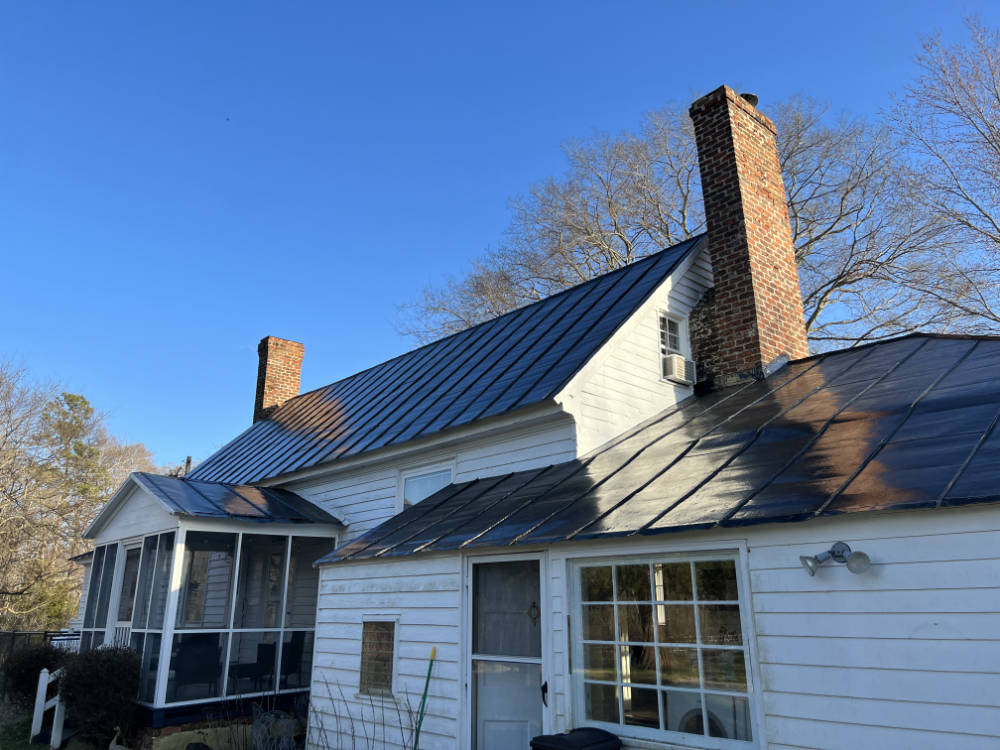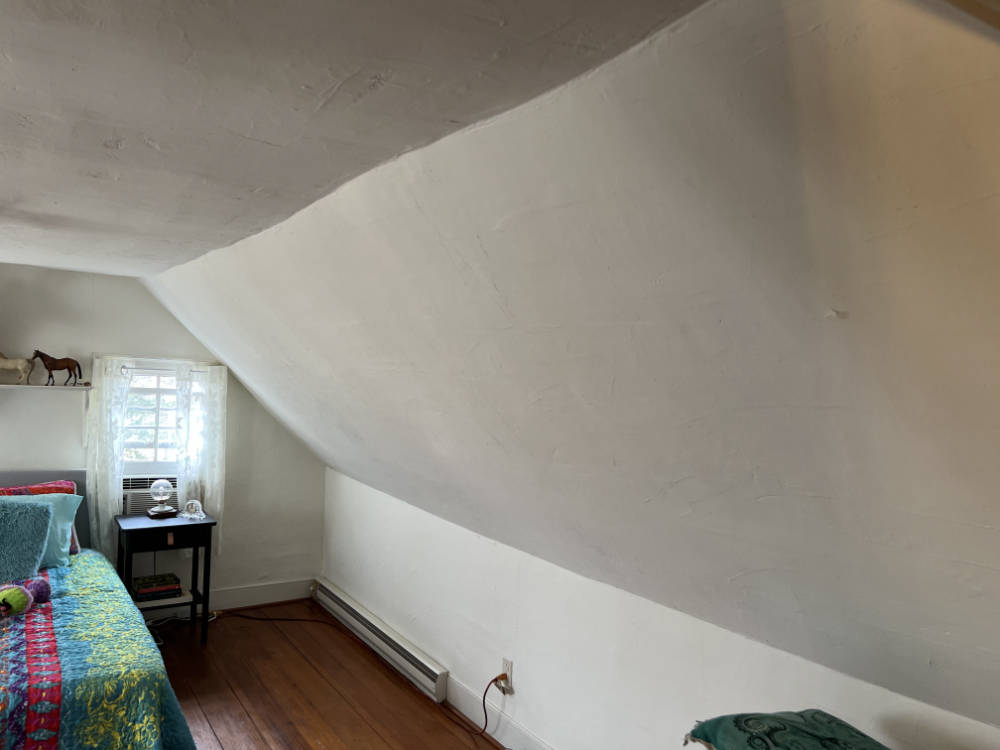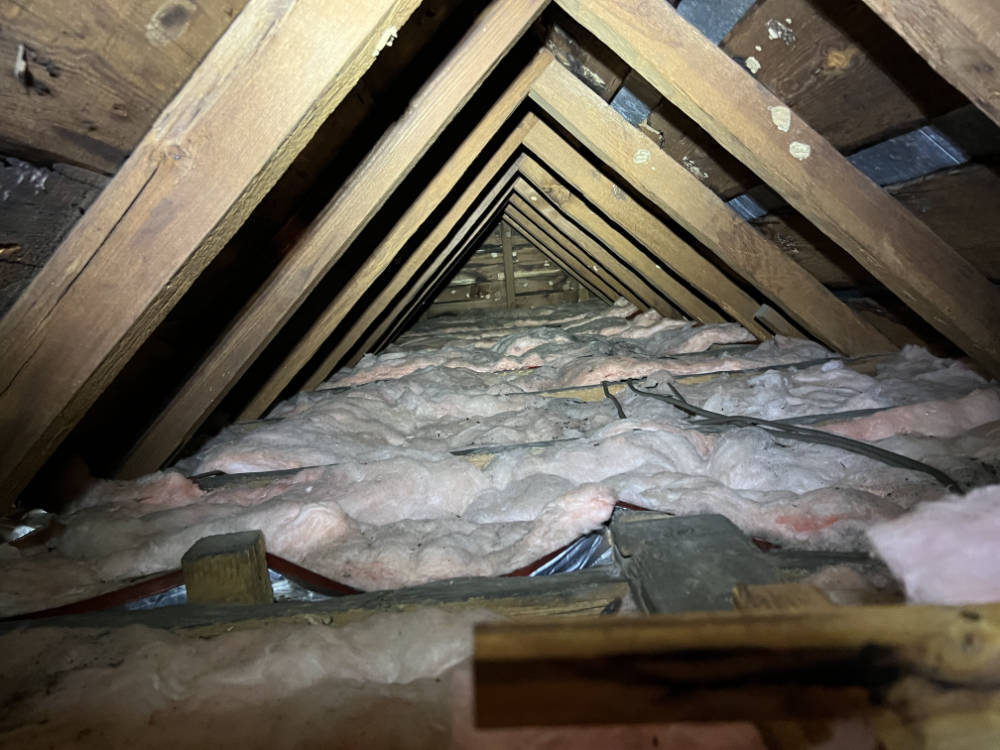How do I insulate an old house built in 1750 with an old metal roof?
August 11, 2023 | Filed under: A Little History, Energy, Home Ventilation, Moisture and Mildew, Roofing Answers, Roofing Help, Roofing Problems

QUESTION: I live in a house built in 1750, which originally had a slate roof. It’s had a metal roof for at least the last 100 years. Currently, it’s a standing seam gable roof with no soffit, gable, or ridge venting, and the only material between metal and attic is the wide rough-cut roof batten boards.

Unfortunately, there’s also no insulation between the roof and the sloped plaster & lath walls of the upstairs rooms, making it challenging to heat or cool them and the upstairs hallway.

I can access the tops of the rafter spaces from the attic. I could theoretically slide baffles and/or insulation (or blow-in insulation) down into the rafter space.
Do you have any suggestions on how to insulate an old house, Todd?
Scott S. – Farmersville VA
ANSWER:
Scott, you have a great old home. I do have some suggestions for insulating your attic and dealing with condensation.
- Does the roof seem to be functioning well? Should the roof ever have to be replaced, that could be a good opportunity for insulation in some of these tough places.
- I think this will always be a tough attic to ventilate. I see no magic bullets to change that.
- Right now, it seems like you’re functioning and not having condensation. However, should you ever do anything that tightens up the walls, windows, and doors, that could hold moisture inside the house – moisture that will then be carried into the attic by convective airflow most likely will condense if it hits a cold surface (such as the back side of the roof).
- The main thing I keep thinking about is closed-cell foam spray insulation. It probably could be sprayed into the walls and sloped areas from the inside. It has a high R-Value and also acts as a good vapor barrier to protect against condensation. Have you talked to anyone who does spray insulation?
The drawback is the contractor needs to know what they are doing. If not, then they will ultimately create uninsulated pockets, where moisture will collect as it tries to escape the home, causing condensation.
- Make sure that laundry, kitchen, and bathroom vents all vent to the outside of the home.
- Should you ever suspect condensation issues, keep the air moving inside the home through fans, ceiling fans, and HVAC fans if you have any. Keeping the air stirred up also helps protect against condensation.
Living in and keeping up with the maintenance of an older home always has challenges. When it’s time to insulate an old house, keeping ventilation in mind is crucial.
You’re living in history, and I hope this information helps you. Please contact me anytime.

Todd Miller has spent his entire career in the metal building products manufacturing industry. He is president of Isaiah Industries, an organization recognized as one of the world’s leading metal roofing manufacturers. Todd is currently Vice President of the MRA (Metal Roofing Association) and a Past Chair of MCA (Metal Construction Association). Through his website, he strives to raise the bar on standards and practices to provide property owners with the best possible products for successful roofing projects.
You may pull quotes from this article provided you include a link back to the original article on this site. You may not reprint this full article, or even a significant amount of the article, without explicit permission. To gain permission, click here.


Leave a Reply